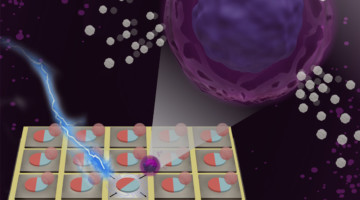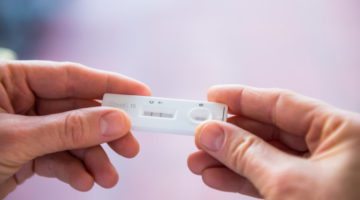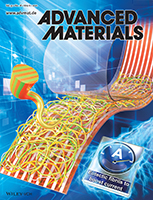The DOE Established Program to Stimulate Competitive Research (DOE EPSCoR) encourages partnerships between national labs and researchers in qualifying states and territories. An EPSCoR collaboration with researchers from Kentucky has resulted in an ALS highlight, career advancement for young scientists, and a larger, center-scale proposal. Read more »
Artificial Spin Ice Toggles Twist in X-Ray Beams on Demand
ALS studies helped scientists understand how a nanoscale magnetic lattice (an artificial spin ice) acts as a toggle switch for x-ray beams with spiral character. The findings represent an important step toward the development of a versatile new tool for probing or controlling exotic phenomena in electronic and magnetic systems. Read more »![]()
![]()
ALS in the News (May 2021)
-
-
-
- Soft x-ray method promises nanocarrier breakthroughs for smart medicine
- New mineral named after ALS Senior Scientist Nobumichi Tamura
- How x-rays could make reliable, rapid COVID-19 tests a reality
- Channeling light into nanobelts
- Physical chemist Geri Richmond picked for top DOE science job
- Photons go to extremes
-
-
Guiding Target Selection for COVID-19 Antibody Therapeutics
Protein-structure studies helped demonstrate that the primary target of antibody-based COVID-19 immunity is the part of the virus’s spike protein that can most easily mutate. The work anticipated the rise of SARS-CoV-2 variants and guides the selection of antibody therapeutics that are likely to be more resistant to immune escape. Read more »![]()
![]()
Single-Domain Multiferroic Array-Addressable Terfenol-D (SMArT) Micromagnets for Programmable Single-Cell Capture and Release
Researchers develop programmable multiferroic micromotors that enable single-cell manipulation based on time-dependent functions of individual cells, such as cell secretion. Smart programmable multiferroic materials lay the groundwork for large-scale automated single-cell sorting and enable a broad spectrum of biotechnology applications. Read more »
Programmable Micromagnets for Single-Cell Sorting
Researchers demonstrated that electrically induced mechanical strain can control the magnetic state of tiny magnets used to sort biological cells. The work lays the foundation for a programmable, single-cell sorting platform to support a wide variety of biotechnology applications, including personalized cancer treatments. Read more »![]()
![]()
How X-Rays Could Make Reliable, Rapid COVID-19 Tests a Reality
A highly sensitive lateral flow assay—the same type of device used in home pregnancy tests—could be developed using pairs of rigid antibodies that bind to the SARS-CoV-2 nucleocapsid protein. SAXS data showed that a particular pair of monoclonal antibodies bound to the nucleocapsid protein very strongly and stably, in part due to the antibodies’ rigidity. Read more »
New Tools Link Catalytic Activity to Nanoscale Transformations
Transitioning to a clean hydrogen economy will require cheaper, more efficient ways to split water molecules. To address bottlenecks in the water-splitting process, researchers developed a suite of advanced tools, including a liquid flow cell that enables electrochemical studies of catalysts under working conditions. Read more »
High-Efficiency Organic Photovoltaics using Eutectic Acceptor Fibrils to Achieve Current Amplification
Researchers report the fabrication of ternary organic solar cells, achieving a significant JSC boost, by virtue of their optimized crystalline feature, with the formation of eutectic crystalline fibrils. The optimal morphology suppresses energetic disorder and nongeminate recombination, and increases charge transfer and transport, yielding a high efficiency of 17.84% with significant current amplification. Read more »
Graphene Outperforms Metal Junctions for 2D Semiconductors
Researchers found that graphene performs ten times better than metal in transmitting a photoinduced current across interfaces with 2D semiconductors. Nanoscale-resolution band-structure measurements provided a deeper understanding of charge transport in these systems and will help in engineering more efficient contacts. Read more »
- « Previous Page
- 1
- …
- 31
- 32
- 33
- 34
- 35
- …
- 83
- Next Page »








